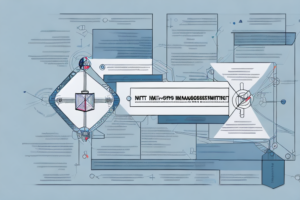What are the 5 components of Risk Management Framework?
8 min read
Five interconnected circles
In today’s fast-paced business world, companies face numerous risks, both internal and external, that can have a significant impact on their day-to-day operations as well as their long-term success. To address these risks, many organizations turn to a risk management framework (RMF) as a means of effectively identifying, assessing, and mitigating potential risks. But what exactly is a Risk Management Framework, and what are the five key components that every RMF should include?
Introduction to Risk Management Framework
A Risk Management Framework is a structured process that helps organizations identify and address potential risks to their operations, assets, and reputation. It is a proactive approach that focuses on preventing and minimizing potential negative impacts before they occur.
Implementing a Risk Management Framework involves several steps, including risk identification, risk assessment, risk mitigation, and risk monitoring. The first step is to identify potential risks that could impact the organization. This can be done through various methods such as brainstorming sessions, risk assessments, and reviewing historical data. Once the risks are identified, they are assessed to determine the likelihood and potential impact of each risk. Based on this assessment, appropriate risk mitigation strategies are developed and implemented. Finally, the risks are monitored on an ongoing basis to ensure that the mitigation strategies are effective and to identify any new risks that may arise.
Understanding the Purpose of Risk Management Framework
The primary goal of the RMF is to enable organizations to make informed decisions about addressing risks based on a thorough analysis of potential risks, impacts, and cost-benefit considerations. The RMF should also help organizations prioritize their risk management efforts, allocate resources effectively, and monitor and evaluate the effectiveness of their risk management strategies over time.
Furthermore, the RMF provides a structured approach to risk management that ensures consistency and standardization across an organization. This is particularly important for large organizations with multiple departments or business units, as it ensures that everyone is following the same risk management processes and procedures. Additionally, the RMF can help organizations comply with regulatory requirements and industry standards, which often mandate specific risk management practices.
The Importance of a Comprehensive Risk Management Strategy
A comprehensive risk management strategy is a crucial component of any successful business. Without a comprehensive and effective RMF, an organization may be exposing itself to significant risks that can result in reputational damage, financial loss, and even legal consequences.
One of the key benefits of a comprehensive risk management strategy is that it allows businesses to identify potential risks and take proactive measures to mitigate them. By conducting regular risk assessments and implementing appropriate controls, organizations can reduce the likelihood and impact of negative events.
Furthermore, a robust risk management strategy can also help businesses to comply with regulatory requirements and industry standards. Many industries have specific regulations and guidelines that organizations must adhere to, and a comprehensive RMF can ensure that these requirements are met.
What is Risk Assessment and Why is it Important?
Risk assessment is the process of identifying and analyzing potential risks that an organization may face. This involves identifying the potential threats, the likelihood of those threats occurring, and the potential impact that those threats could have on the organization. By conducting a thorough risk assessment, an organization can develop a more comprehensive understanding of the potential risks they face and develop effective strategies for mitigating those risks.
One of the key benefits of conducting a risk assessment is that it helps organizations prioritize their resources and efforts. By identifying the most significant risks, organizations can focus their attention on developing strategies to address those risks first, rather than spreading their resources too thin across a wide range of potential threats.
Another important aspect of risk assessment is that it helps organizations comply with regulatory requirements. Many industries are subject to specific regulations that require them to conduct regular risk assessments and implement appropriate risk management strategies. By conducting a thorough risk assessment, organizations can ensure that they are meeting these regulatory requirements and avoiding potential penalties or legal issues.
Identifying Risks and Threats to Your Organization
Identifying risks and threats to an organization can be challenging, as they may come from a wide range of sources, including internal and external factors. Examples of common risks and threats that organizations face include information security breaches, natural disasters, data privacy issues, and regulatory compliance failures. To effectively identify these risks, organizations must conduct a thorough risk analysis process for each potential risk category.
One important aspect of identifying risks and threats is to involve all stakeholders in the process. This includes employees, customers, suppliers, and partners. By involving all relevant parties, organizations can gain a more comprehensive understanding of potential risks and threats, and develop more effective risk mitigation strategies.
Another key factor to consider when identifying risks and threats is the impact they may have on the organization. Some risks may have a minor impact, while others may have a significant impact on the organization’s operations, reputation, and financial stability. It is important to prioritize risks based on their potential impact, and allocate resources accordingly to address the most critical risks first.
Developing Risk Mitigation Strategies for Your Business
Once an organization has identified potential risks, the next step is to develop risk mitigation strategies that can minimize the impact of these risks on the organization. Risk mitigation strategies may include implementing security measures, establishing policies and procedures, and providing employee training to mitigate risks. Organizations should prioritize their risk mitigation strategies based on the potential risks that pose the most significant threats to the business.
It is important for organizations to regularly review and update their risk mitigation strategies to ensure they remain effective. This can involve conducting regular risk assessments, monitoring industry trends and emerging threats, and seeking input from employees and stakeholders. By continuously evaluating and improving their risk mitigation strategies, organizations can better protect themselves from potential risks and ensure the long-term success of their business.
How to Monitor and Evaluate Risks in Your Organization
Monitoring and evaluating risks should be an ongoing process for any effective risk management framework. Organizations should establish processes to regularly assess and monitor potential risks to their business and evaluate the effectiveness of their risk management strategies in addressing those risks. This involves regularly reviewing risk management metrics, such as risk assessments and incident reports, and making adjustments to risk management strategies based on the results of these evaluations.
It is also important for organizations to involve all stakeholders in the risk management process. This includes employees, customers, suppliers, and other partners who may be affected by potential risks. By involving these stakeholders, organizations can gain valuable insights into potential risks and develop more effective risk management strategies. Additionally, involving stakeholders can help to build trust and transparency, which can be critical in managing risks and maintaining a positive reputation.
Enhancing Your Company’s Security Measures with Risk Management Framework
An effective RMF can enhance an organization’s security measures by providing a structured approach to identifying and addressing potential risks. By proactively identifying and mitigating risks, an organization can improve its overall security posture and reduce the likelihood of costly security incidents.
One of the key benefits of implementing an RMF is that it helps organizations comply with regulatory requirements. Many industries, such as healthcare and finance, have strict regulations in place to protect sensitive information. By following an RMF, organizations can ensure they are meeting these requirements and avoiding potential fines or legal issues.
Another advantage of using an RMF is that it promotes a culture of security awareness within an organization. By involving employees in the risk management process, they become more aware of potential security threats and are better equipped to identify and report suspicious activity. This can help prevent security incidents before they occur and improve the overall security posture of the organization.
Best Practices for Implementing Risk Management Framework in Your Business
Effective implementation of an RMF requires a commitment from all levels of an organization. Key practices for implementing a Risk Management Framework include identifying and engaging key stakeholders, developing a risk management policy, establishing a risk management team and process, and incorporating risk management into existing business processes.
Another important aspect of implementing an RMF is conducting regular risk assessments. This involves identifying potential risks and vulnerabilities, assessing the likelihood and impact of those risks, and developing strategies to mitigate or manage them. It is also important to regularly review and update the risk management policy and processes to ensure they remain effective and relevant.
Finally, effective communication and training are essential for successful implementation of an RMF. All employees should be aware of the risk management policy and processes, and should receive regular training on how to identify and manage risks in their day-to-day work. This helps to create a culture of risk awareness and responsibility throughout the organization, and ensures that everyone is working together to manage risks effectively.
Case Study: Real-Life Examples of Successful Risk Management Framework Implementation
There are numerous examples of organizations that have successfully implemented RMFs to address potential risks and protect their business operations. For example, the U.S. Department of Defense has implemented a comprehensive RMF, known as the Risk Management Framework for Information Technology. This framework accounts for the unique risks that the Department of Defense faces and includes detailed policies and procedures for managing those risks.
Another example of successful RMF implementation is seen in the financial industry. Banks and other financial institutions are required to comply with strict regulations and guidelines to ensure the security of their customers’ financial information. Many of these institutions have implemented RMFs to manage the risks associated with cyber attacks, data breaches, and other potential threats.
Additionally, healthcare organizations have also implemented RMFs to protect patient data and comply with regulations such as HIPAA. These organizations have developed policies and procedures to manage risks associated with data breaches, unauthorized access to patient information, and other potential threats to patient privacy and security.
Common Challenges Faced in Implementing Risk Management Framework and How to Overcome Them
Implementing a Risk Management Framework can be a complex process, and organizations may face numerous challenges along the way. Common challenges include lack of resources, inadequate support from management, and resistance to change. To overcome these challenges, it is essential to establish clear communication channels, provide adequate training, and engage all stakeholders throughout the implementation process.
Another common challenge faced in implementing a Risk Management Framework is the lack of understanding of the framework’s purpose and benefits. This can lead to a lack of buy-in from stakeholders and a reluctance to allocate resources towards the implementation process. To overcome this challenge, it is important to educate stakeholders on the benefits of the framework, such as improved decision-making, increased efficiency, and reduced risk exposure. Additionally, highlighting successful implementations in similar organizations can help build support and enthusiasm for the process.
Future Trends in Risk Management Framework and What You Need to Know
As the business landscape continues to evolve, RMFs will also need to adapt to address emerging risks. Emerging trends in RMF include greater emphasis on data privacy risks, the integration of artificial intelligence and machine learning into risk assessments, and increased use of automation to enhance risk management processes.
Conclusion: The Importance of Adopting a Proactive Approach to Risk Management
Overall, a proactive approach to risk management is an essential element of any successful business. By identifying, assessing, and mitigating potential risks, organizations can minimize the impact of those risks on their operations, reputation, and bottom line. Implementing a comprehensive Risk Management Framework is a critical component of this proactive approach, and organizations that fail to adopt such a framework may be exposing themselves to significant risks and losses.



